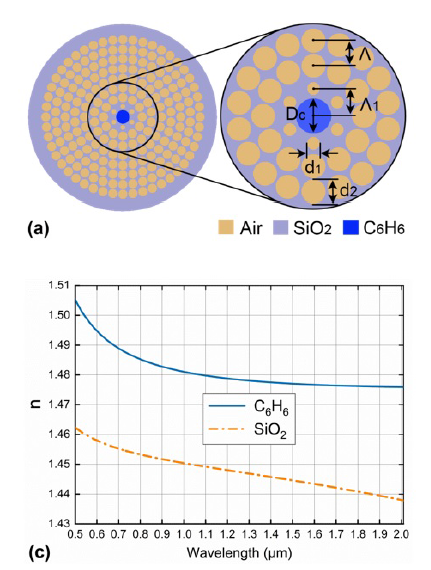
An ultra-flattened chromatic dispersion in circular C6H6-infiltrated photonic crystal fibers
- University of Education, Hue University, 34 Le Loi, Hue City, Viet Nam
Abstract
Introduction: In this study, we report a new design of a circular lattice photonic crystal fiber and investigate its optical properties numerically.
Methods: Near-zero ultra-flattened chromatic dispersion is achieved by allowing benzene (C6H6) to infiltrate the hollow core and induce a difference in the air hole size in the cladding. By solving Maxwell's wave equations using the full-vector finite-difference eigenmode, the electromagnetic field modes are analyzed.
Results: The results show that the variation in dispersion over the broad wavelength range of 527 nm is ± 0.753 ps/nm.km. The nonlinearity coefficient is significantly improved with a value of several thousands W−1.km−1, which is favorable for supercontinuum generation with low input power even though the confinement loss has not yet reached its desired value.
Conclusion: Two PCFs with optimal lattice parameters and suitable characteristic quantities are selected for supercontinuum generation orientation compatible with application fields such as spectroscopy, temperature sensing, and telecommunication.

